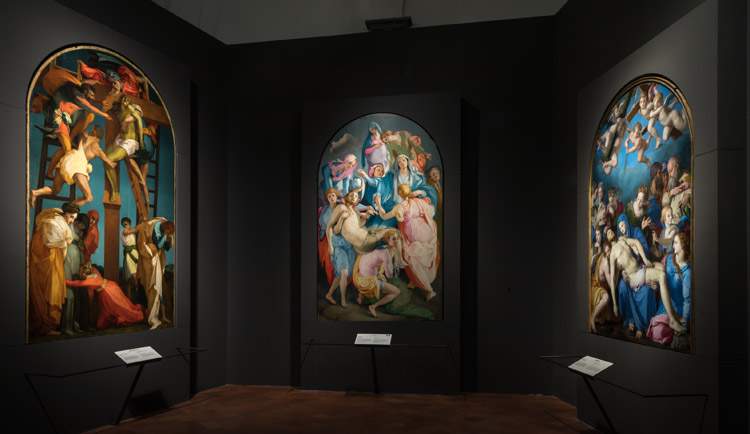In 1584, playwright and art writer Raffaello Borghini (Florence, 1541 - 1588) published a treatise in the form of a dialogue “in which of painting and sculpture is spoken,” and set it at the “Riposo,” the villa that Bernardo Vecchietti, a patron of artists and member of one of the oldest Florentine families of nobility, had had built just outside Florence as a place of recreation. In the treatise (to which Borghini, juxtaposedly, gave the name Riposo) the task of drawing up the rules that “the painter should be observed” in the invention “of the historie sacre” is delegated to the master of the house: thus, with modern cataloguing flair, Bernardo Vecchietti lists “three things principally,” namely, strict adherence to sacred texts, the capacity for inventiveness, and the triad consisting of “honesty”, “reverence,” and “divotione,” “so that those concerning in exchange for compugnersi a penitenza nel rimirare quelle,” that is, the “historie sacre,” “more tosto non si commuovano a lascivia.”
Therefore, an artist who wants to propose a painting capable of inspiring pious feelings in the faithful, must not bend to his own whims, is obliged to a strict representation of sacred history and to respect “the holy temple of God” to which the work is destined and, ultimately, has the obligation to offer to the eyes of the observer images that should not be considered improper.
Borghini’s dialogue includes the two concepts around which the exhibition The Sixteenth Century in Florence. “Modern Manner” and Counter-Reformation: “lasciviousness” and “devotion.” Concepts that the curators, Antonio Natali and Carlo Falciani, would have liked to include in the title of the exhibition currently in the rooms of Palazzo Strozzi. If it is necessary to provide just one of the many keys to interpretation that the highly successful Florentine exhibition offers its audience, one will not struggle to find a sort of constant, which runs from the first to the last room to guide the visitor’s path, precisely in this disagreement between “lasciviousness” and “devotion,” between profane figurations cloaked in an eroticism that is at times subtle, at other times blatantly ostentatious, and altar panels steeped in Counter-Reformation rigor, between Venuses rising from the waters, smoothing their hair with all-female grace, and chaste Madonnas or redeemed sinners.
Click here to read the full review...
 |
| A review of the exhibition The Sixteenth Century in Florence, at Palazzo Strozzi |
Warning: the translation into English of the original Italian article was created using automatic tools. We undertake to review all articles, but we do not guarantee the total absence of inaccuracies in the translation due to the program. You can find the original by clicking on the ITA button. If you find any mistake,please contact us.